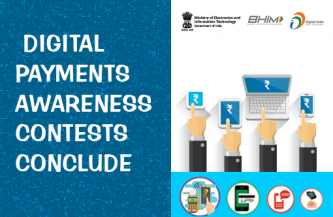India is making its mark in the world

With a government guided by PM Modi, India will stride on the path of development and reach its potential by the 100th year of Independence
India is in a rare moment of equilibrium. It has begun to reap its demographic dividend. Remnants of red tape and corruption that slowed down its rise for decades are waning. The stark inequality that shackled the democracy of 1.4 billion people has started to thaw. The global recession that could torpedo India’s growth plans pre-2014, now face a more resilient economy that has learned to pivot, and spin them into opportunities for growth. India’s economy is no longer at the receiving end of the global order but is in the fray of the world’s most powerful future economies, with an unmatched growth rate. The International Monetary Fund (IMF) says India and China will account for 50% of the total world gross domestic product growth in 2023, against 10% for the United States (US) and the Euro Zone.
What accounts for this optimism in India’s economy? The answer hinges on three umbrella approaches, 3Cs, that run as a common thread across sectors. The first is individual competitiveness, which begins by empowering those in need so that they can power the nation. Within this group, the government has placed its focus on two segments — young people (65%), and women (50%). This mandate is being carried out by every ministry through programmes designed for the two segments.
Then, by equipping each household with electricity, water, housing, subsidised cooking gas, quality education through the National Education Policy 2020, and safe hygiene through toilets and income transfers, this government is ensuring that its working population is channelised properly and absorbed into growth-inducing sectors. Simultaneously, those at the lowest rung of the economic ladder are being provided with a safety net through direct benefits transfers. Enabled by the JAM (Jan Dhan, Aadhaar, Mobile) trinity, this has allowed more than ₹22.4 lakh crore to directly reach their accounts — a feat neither witnessed by pre-2014 India, nor the rest of the world.
The power of technology has given a fillip to entrepreneurship. What was earlier a reserve of the privileged is now a national phenomenon, with 49% of India’s startups coming from tier 2 and tier 3 cities. Schemes such as MUDRA are creating a large pool of entrepreneurs, mostly young people and women from marginalised groups. It is noteworthy that about half of the government-recognised startups are led by women. From a global standpoint too, India’s ecosystem of startups is broader than in any other developing country. It is only a matter of time before these startups bloom into successful Indian MNCs, contributing to both India’s heft and perception in the world order.
The second foundational approach is the re-emergence of competitive federalism, in letter and spirit. Early on, Prime Minister (PM) Narendra Modi signalled his resolve to build strong states to build a strong nation. He recast the erstwhile Planning Commission into the NITI Aayog to act as the glue between the Centre and the states. Then, in a departure from the big brother relationship between the two, the government replaced a Centre-to-State, one-way flow of policy, with a healthy partnership with the states. It empowered them with the resources and autonomy to experiment with their development models.
For example, states now get a 42% share of the Centre’s tax revenue as compared to 32% earlier. In the last nine years, this strengthening of federalism has given birth to competitive federalism, where states — on the back of parameters such as ease of doing business, their industrial policies, and incentives — compete for investments. This spirit is palpable in the ongoing G20 summits where states are vying to get companies to sign deals and engage closely with investors. As expected, the post-Covid-19 recovery of the economy is being largely driven by bullish investment sentiment.
Alongside empowering individuals and states, the final approach is about India entering a competitive globalization space, where the PM is showing the path of a human-centric, Indian way of globalisation, that espouses its age-old philosophy of Vasudhaiva Kutumbakam (the world is one family). This approach proved its mettle during the peak of the Covid-19 pandemic when India’s assistance to more than 100 countries was applauded the world over. Since then, world leaders, including those in the Global North, look up to PM Modi for global solutions. The Australian PM’s most recent expression before a 20,000-strong Indian diaspora, “PM Modi is the boss,” is nothing short of a reaffirmation of India’s potential role as a force of global good. This makeover of India’s geopolitical standing has a potent ripple effect on various fronts. For instance, there is renewed interest in concluding some of the long-pending free trade agreements (FTAs) and clinching new ones. Resultantly, India’s goods exports hit a record $448 billion in 2022-23, despite the global slowdown.
On the home front, there is palpable interest among global businesses to diversify their supply chains in India. Thanks to the government’s mission to launch India in a business-friendly avatar, we have moved away from the “China plus one” to an “India-first” reputation. There is no surprise, therefore, that the biggest technology companies plan to extend their shops in India. For example, a quarter of all Apple iPhones will be made in India by 2025. Similarly, aerospace major Airbus has set up a C-295 aircraft manufacturing facility — a first for India.
Thus, there is no doubt that with the indigenous strength of its 1.4 billion people, and a government guided by the vision of PM Modi, Team India will continue to stride on the path of development, till it reaches its full potential by the Shatabdi Kaal. As of today, it stands strong in a position of power at the global negotiating table. It is mighty clear that not only will India pursue a Nation First policy, but it will also herald a new way of thinking that echoes One Earth, One Family and One Future.
Author: Shri. Jyotiraditya Scindia is the cabinet minister for the Ministry of civil aviation and the Ministry of Steel.

















